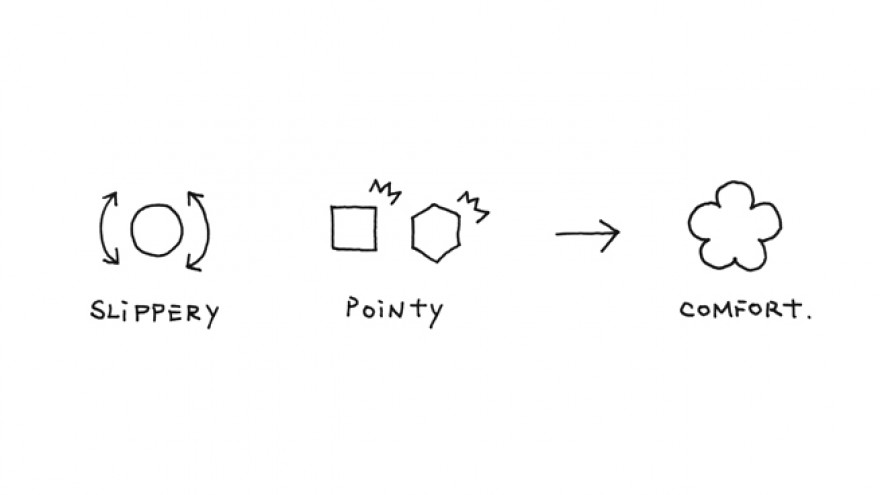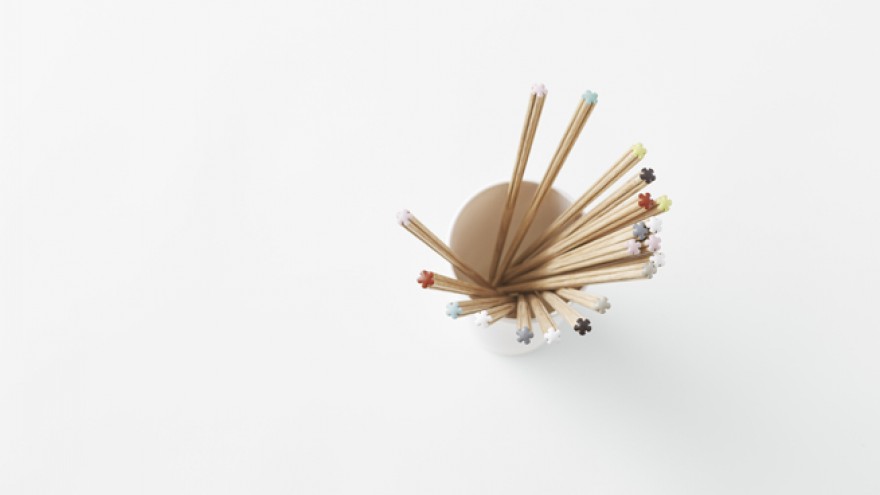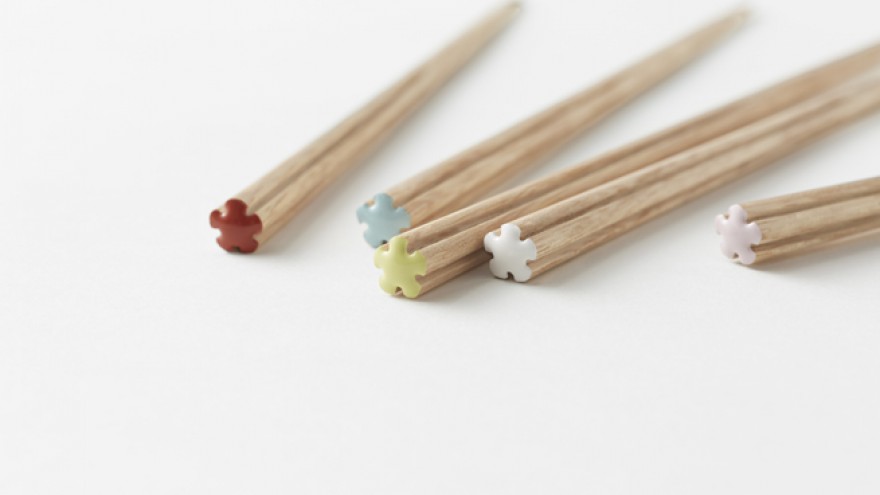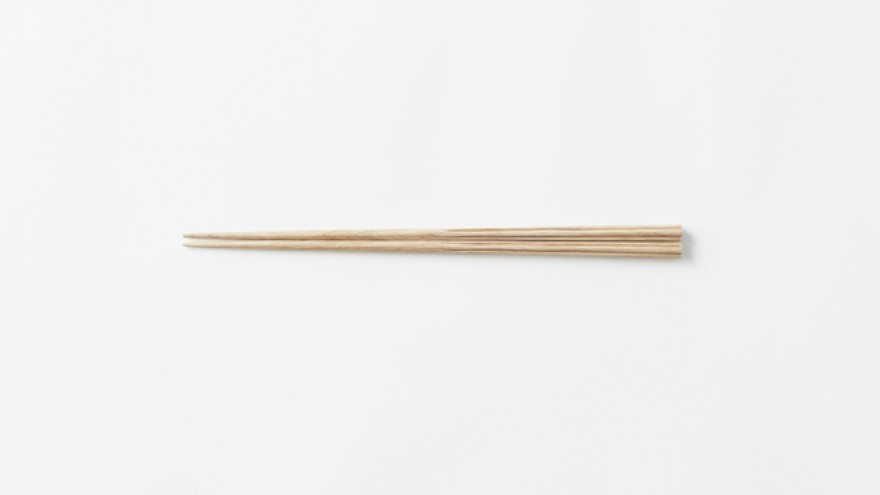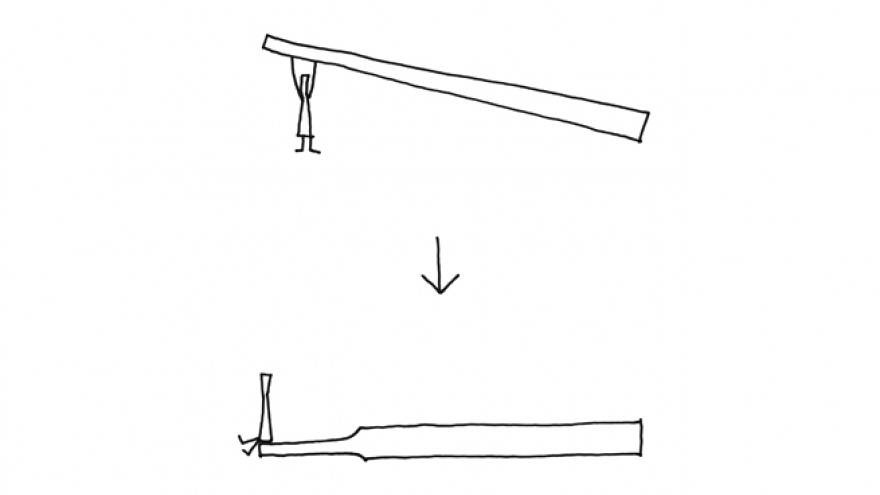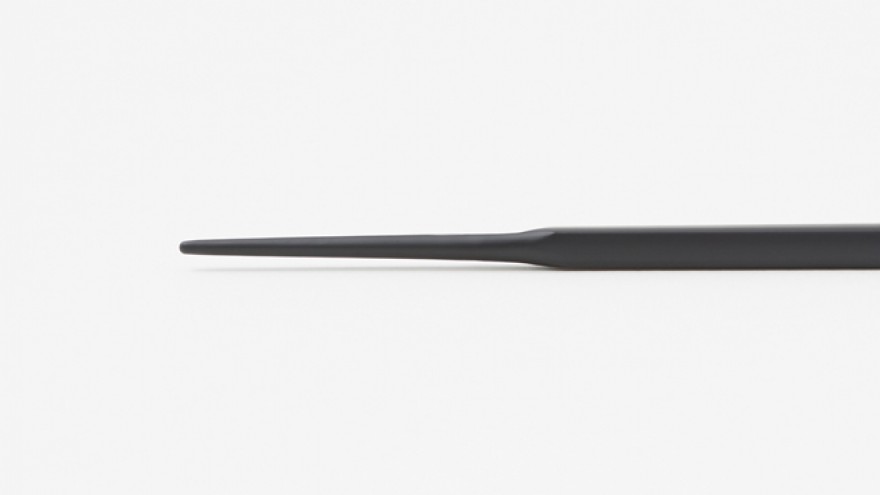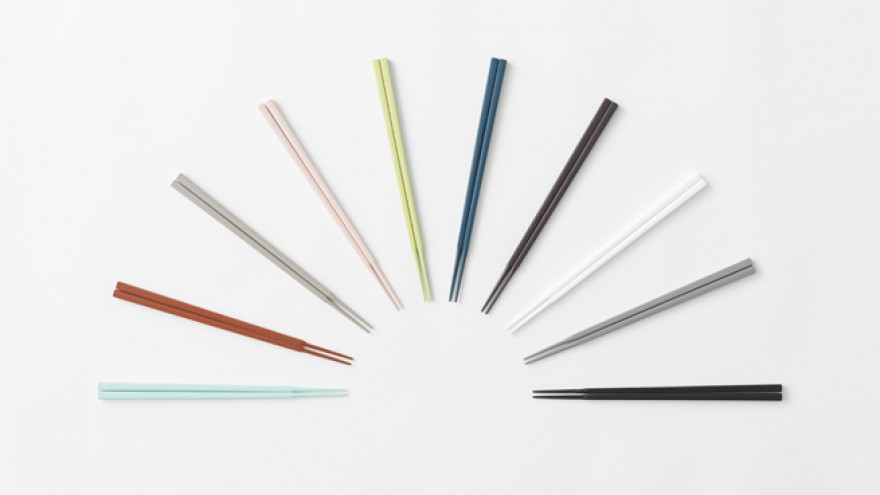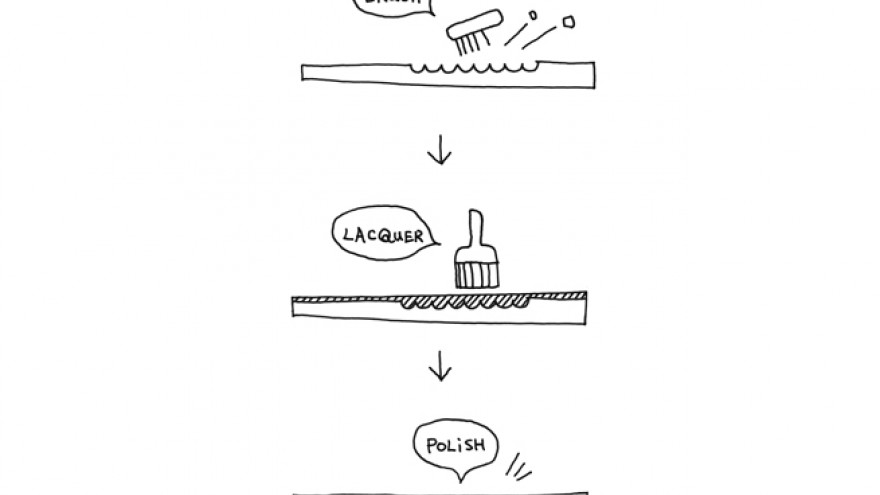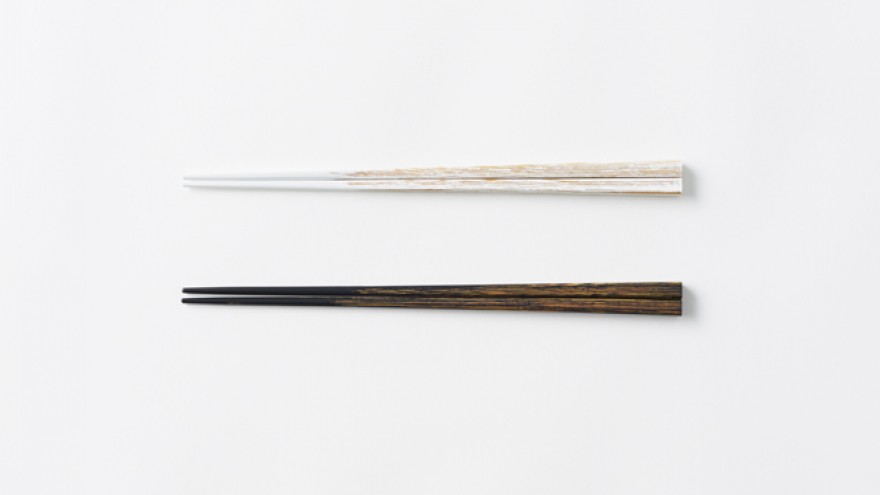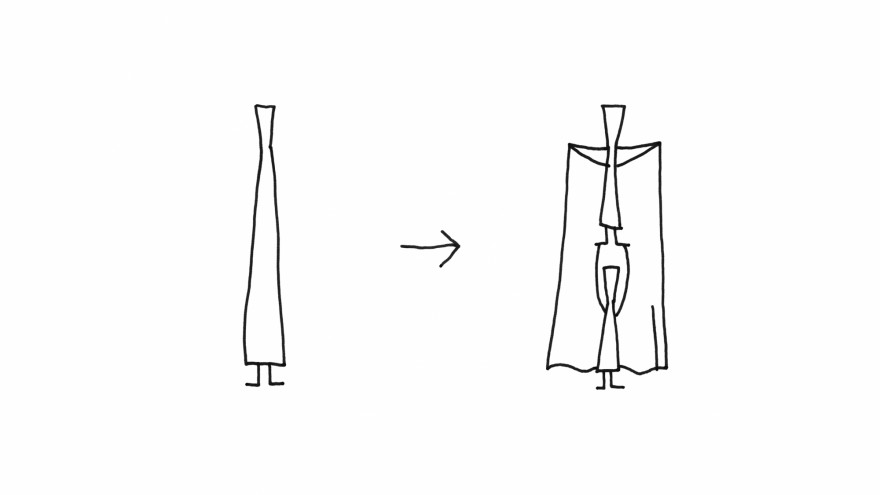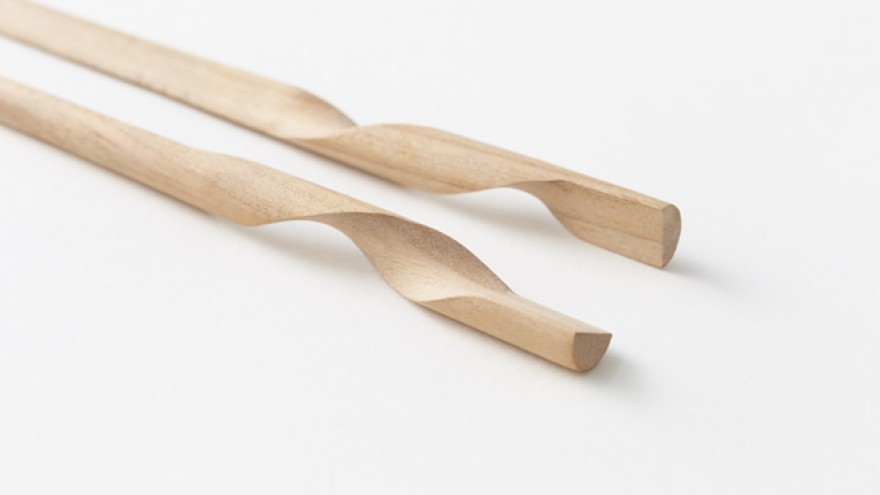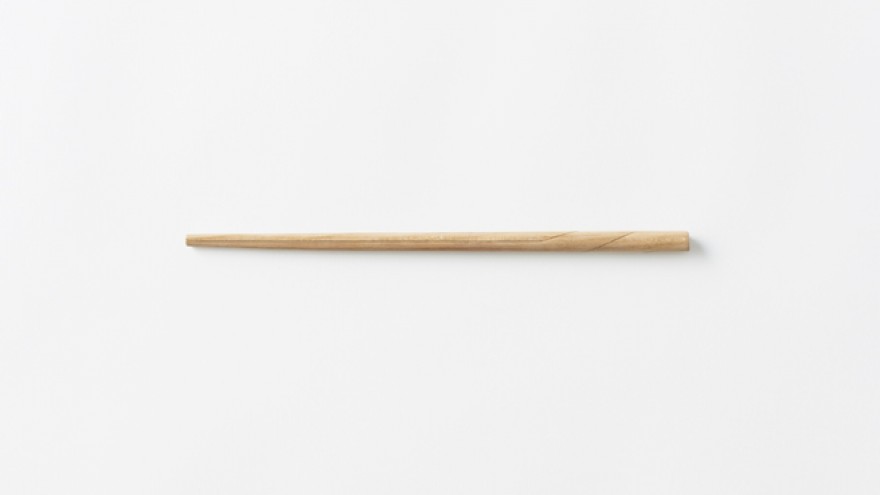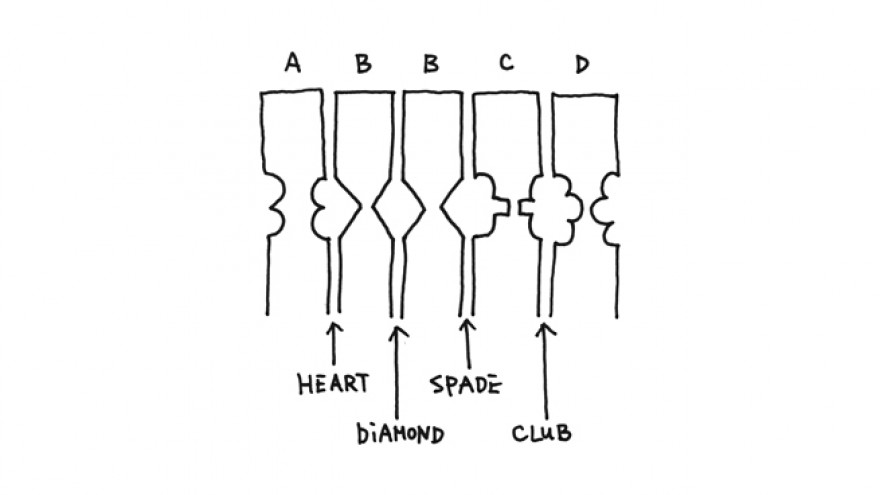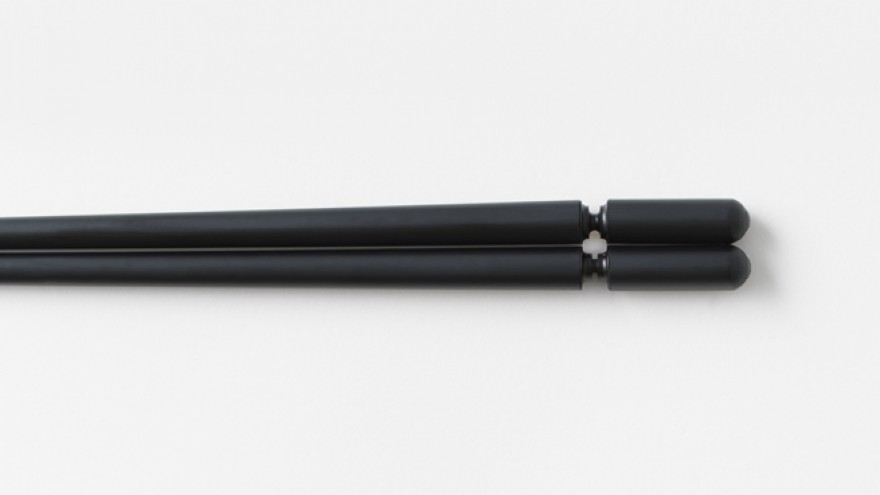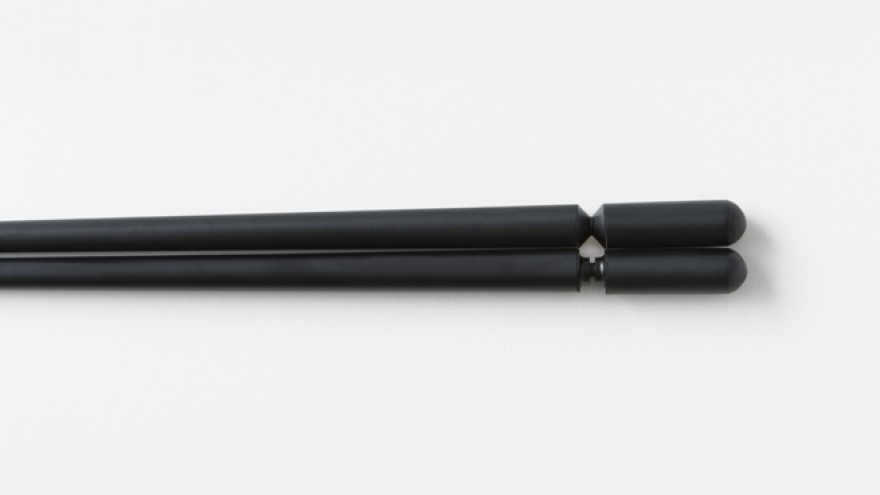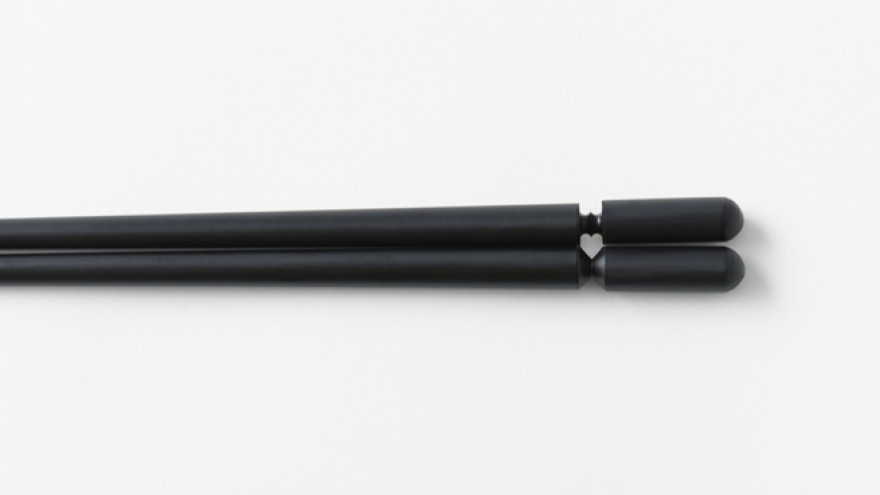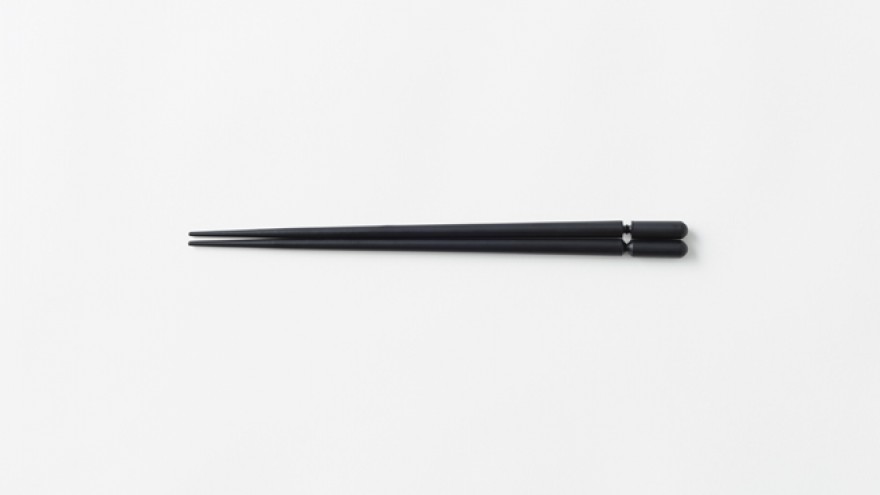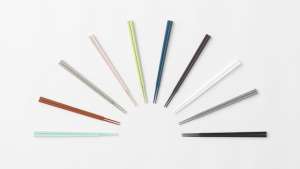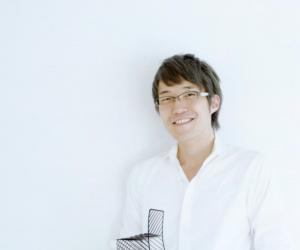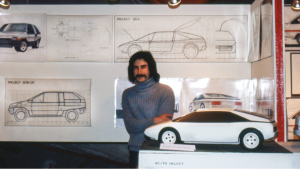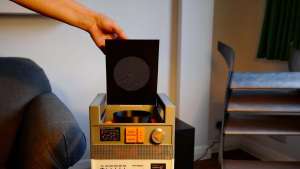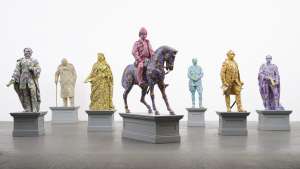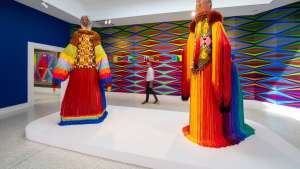From the Series
In a collection of six different designs, Nendo rethinks the simple chopstick, considering the various functional and cultural aspects of its use.
For four centuries, the town of Obama in Fukui Prefecture, Japan, has manufactured lacquered chopsticks. Obama’s lacquered chopsticks have been recognised as the hardest and most beautiful of Japanese lacquer chopsticks since the seventeenth century, when they became known as ‘Wakasa-nuri’.
We designed new chopsticks in collaboration with Hashikura Matsukan, a manufacturer who continue Obama’s traditional manufacturing techniques today, says Oki Sato.
The Hanataba set of chopsticks considers the conundrum of form and comfort of use. Round chopsticks are slippery to use, but overly square-cornered ones aren’t as comfortable to hold. Nendo explored ways of increasing the surface area of chopsticks in the hand, as a way of improving holding comfort, and discovered the natural form of the pleated cross-section.
Keeping chopsticks clean by creating thin tapered tips that float above the tale surface the Jikaoki design is carefully carved away by Hashikura Matsukan’s expert artisans.
The world is full of patterned chopsticks, so we wondered if it wouldn’t be possible to create pattern in the space between the chopsticks. For the Sukima design We came up with four patterns: hearts, diamonds, clubs and spades. The two chopsticks are carved into different shapes for all patterns but the diamonds, but it’s possible to use one of the diamond chopsticks as the top chopstick with a spade, or the bottom chopstick with a heart, for a total of four different patterns from the four different chopstick pairs.
The delicate carving of the Sukima chopsticks required an alumiuium reinforced core to ensure that the chopsticks were still functional.
The Kamiai design creates a compact and neat set of chopsticks that snap together into one piece when flipped and fitted together using two tiny magnets while the Rassen design continues the idea of a single unit with carved shapes that fit into each other. Rassen combines the artisans’ hand skills and a multi-axis CNC miller to create these unusual chopsticks.
Creating a interesting surface the Udukuri range makes use of the udukuri process, in which the wood surface is carved away with a metal brush, leaving only the hard wood grain, then lacquered the chopsticks and polished them again to bring out the wood grain as pattern.

